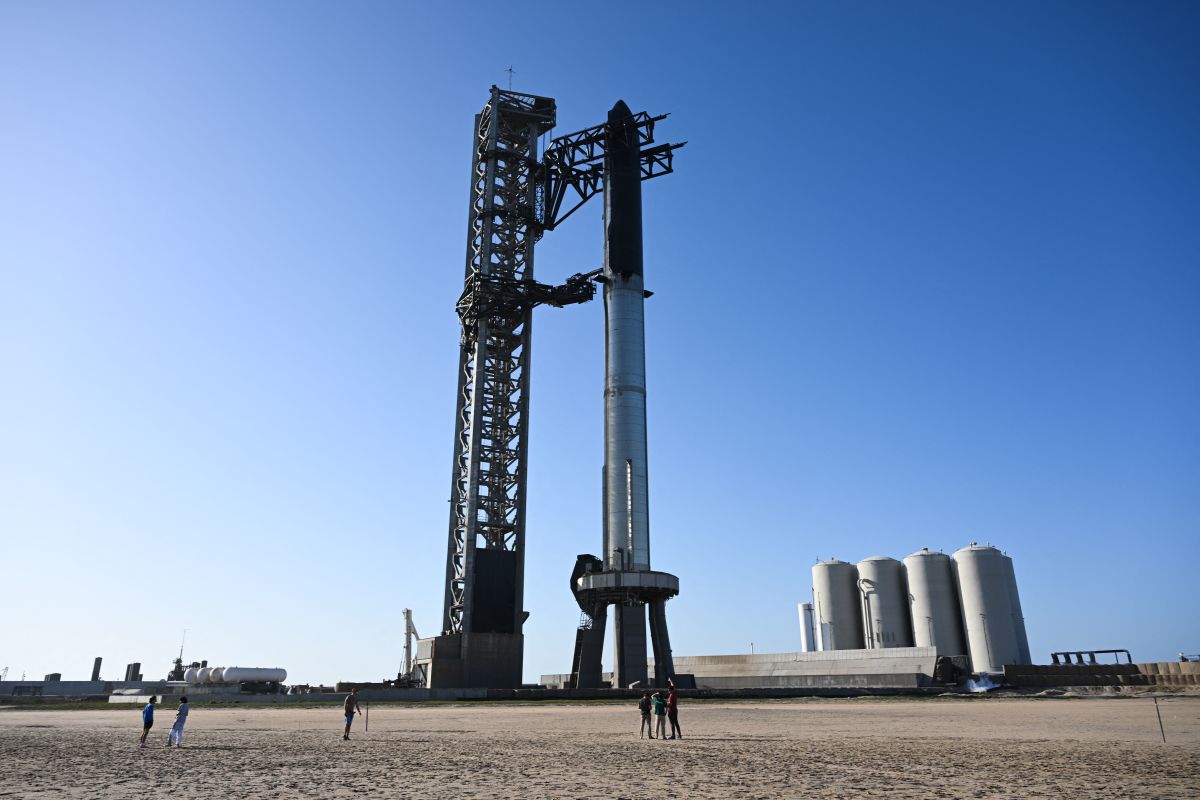
After months of waiting, the Federal Aviation Administration (FAA) has officially completed its safety review of SpaceX's Starship rocket. This brings the company one step closer to its highly-anticipated second test flight of Starship, something SpaceX has been anxious to conduct since its initial launch in April.
Though the review is complete, Starship does not yet have a license to launch. The FAA must additionally — in collaboration with the U.S. Fish and Wildlife Service — complete an environmental review. Starship will not be able to fly until that review is complete.
It remains unclear how soon the review will be completed, though it is likely that Starship will fly soon after it is wrapped up.
Related: Elon Musk's SpaceX is making bold moves despite one red flag
The Starship Super Heavy rocket is the "most powerful launch system ever developed," according to SpaceX, standing at nearly 400 feet tall and designed to carry up to 100 people on lengthy, interplanetary flights.
Indeed, the biggest goal CEO Elon Musk has for Starship revolves around interplanetary travel.
He said in October that the reason the rocket is so large is that it must be capable of comfortably carrying a large crew as well as millions of tons of construction equipment.
Musk said at the time that he could see an uncrewed Starship mission landing on Mars within the next three to four years. And once SpaceX can establish in-flight fuel transfers, Starship should be able to traverse the entire solar system.
"I'm optimistic that we can take a Starship that's fairly unmodified ... I suspect you could land the Starship on the moon," Musk said at the time. "You could go to the asteroid belt, the moons of Jupiter, the moons of Saturn."
Elon Musk on colonizing Mars
Getting to Mars, however, is only one part of a two-pronged problem. Once Musk lands on the red planet, he has to figure out how to survive on Mars, with the eventual goal of building some sort of society on the planet.
The first step, Musk told Joe Rogan on a recent episode of his podcast, calls for a life-support system. But over time, Musk said, "you can terraform Mars."
"If you warm Mars up, there's a bunch of frozen Co2 that will evaporate and densify the atmosphere," he said. "You'd actually want global warming on Mars. Mars is about 50% farther away from the Sun than the Earth. So it gets about less than half the solar energy than Earth does."
A 2005 report from NASA's Ames Research Center found that the best way to make Mars livable for humans would involve injecting synthetic greenhouse gases into its atmosphere. If scientists inject 300 parts per million of a gas mixture featuring fluorine and carbon into Mars' atmosphere, a greenhouse gas effect — similar to that taking place on Earth — would occur. Over time, the ice would melt, as Musk said, adding more carbon to the atmosphere and further increasing the temperature.
This process, scientists said at the time, could take thousands of years to complete.

Warming Mars up, however, and making it livable, are two very different things. Chris McKay, a prominent NASA scientist, told SpaceNews in 2015 that there remain several unknowns relevant to warming up the planet.
"Mars does have enough water, that we know, but we don’t know if Mars has enough carbon dioxide and nitrogen," he said. "Nitrogen is probably the most serious. The amount in the atmosphere as nitrogen is much too small."
McKay said at the time that it would take roughly 100 years to warm Mars up.
"Warm, wet and with a thick carbon dioxide atmosphere it would be suitable for life but not Earth 2.0.," he said, adding that NASA estimates suggest it could take 100,000 years to make Mars' atmosphere oxygen-rich.
"There are two ultimate sources of motivation and interest in Mars," McKay said. "First, it is the connection to the search for life — perhaps finding a second genesis of life on Mars. Then it’s Mars as a potential place where humans can live and work."
"I am happy to have contributed a small bit to those questions," he added. "I don’t imagine I will see answers to them anytime soon."
Related: Elon Musk shares exciting updates about the future of interplanetary travel
Get investment guidance from trusted portfolio managers without the management fees. Sign up for Action Alerts PLUS now.







